There can be your advertisement
300x150
Interesting Facts About the History of the Vacuum Cleaner
People have been thinking about making house cleaning easier for several centuries. For example, cleaning the Louvre using brushes and cloths could take several days, so the palace was rarely cleaned. By the end of the 16th century and the beginning of the 17th century, the Louvre was essentially a giant dump. It is not surprising that the first prototype of the modern vacuum cleaner appeared in France.
A Parisian craftsman, Etienne Lar, proposed a special device for fast room cleaning to Cardinal Mazarin. This was a long heavy pipe with five straps that drove a screw inside the pipe. It's hard to explain how this mechanism worked. Perhaps the driven screw was supposed to suck up dust. Unfortunately, the device did not take off.
First Vacuum Cleaners
The first known patent for manufacturing a vacuum cleaner was issued in July 1860 in the USA. Daniel Hess from Iowa proposed equipping the device with a rotating brush and a complex system of bellows to create an air current.
According to the preserved project, the 'carpet sweeper' was quite large in size. However, there is no evidence that the mechanism was ever built.
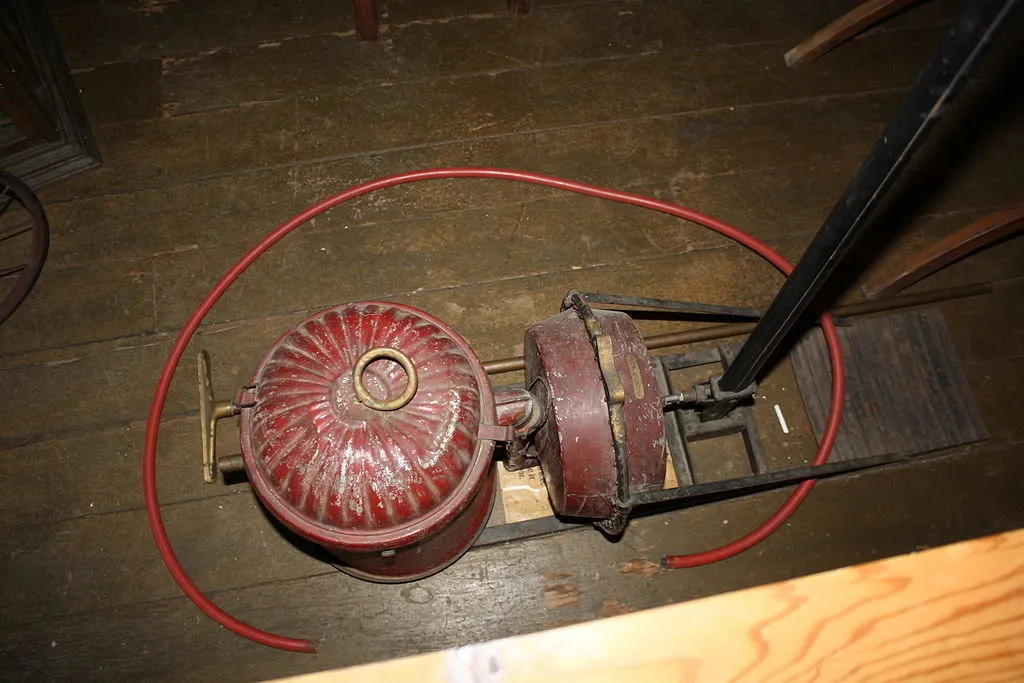
Another American, Ivus McGaffney, had much more luck. In 1869, he received a patent for a vacuum cleaner with a belt drive. The dust-sucking mechanism was powered by a special handle that had to be pressed continuously.
The device was light and compact, but the only problem it had was that pushing the vacuum cleaner and holding down the handle at the same time wasn't so easy.
In 1899, John Towner received a patent for a gasoline-powered vacuum cleaner. In 1900, Corin Duffor patented an electric vacuum cleaner. Both inventions failed commercially.
Towner's gasoline-powered vacuum cleaner was unsafe; even during tests, two devices exploded. Duffor's creation was simply impractical, so the company he founded went bankrupt in half a year.
A new breakthrough was made by a Briton, Herbert Cecil But. He turned house cleaning into a real show.
But designed a giant vacuum cleaner that quickly sucked up dust from carpets and drapes.
Vacuum Cleaner as a Show
Customers of But's British Vacuum Cleaner Company hired the vacuum cleaner for cleaning at a cost of 3–5 pounds depending on room size. The vacuum cleaner was delivered to the house on horses and left outside.
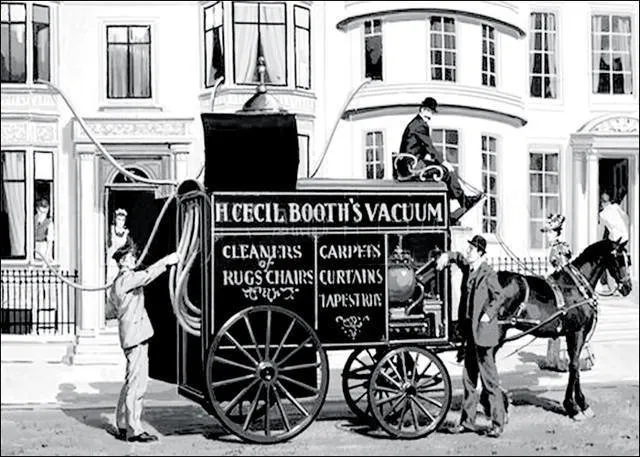
It was cleaned using 30-meter hoses. The British Admiralty, the Treasury, and even Queen Victoria used But's services. In London, it became fashionable to invite guests to watch the cleaning.
Portable Vacuum Cleaner
In 1905, But had a competitor—Walter Griffiths—who patented a lightweight portable vacuum cleaner very similar to modern devices. It was called 'Improved Vacuum Apparatus for Removing Dust from Carpets.' After its invention was introduced to the market, cleaning dust from homes stopped being a show. The device resembled modern vacuum cleaners in that it fit into an apartment, didn't take up much space, and could be operated by any ordinary person.
To the right — advertisement of a vacuum cleaner in a newspaper.
In 1910, P. A. Fisker patented an electric vacuum cleaner whose name he took from the company's telegraph address—Nilfisk. This vacuum cleaner weighed only 17.5 kg and could be operated by one person. The company founded by Fisker and his partner Nielsen still exists today and is called Nilfisk-Advance.
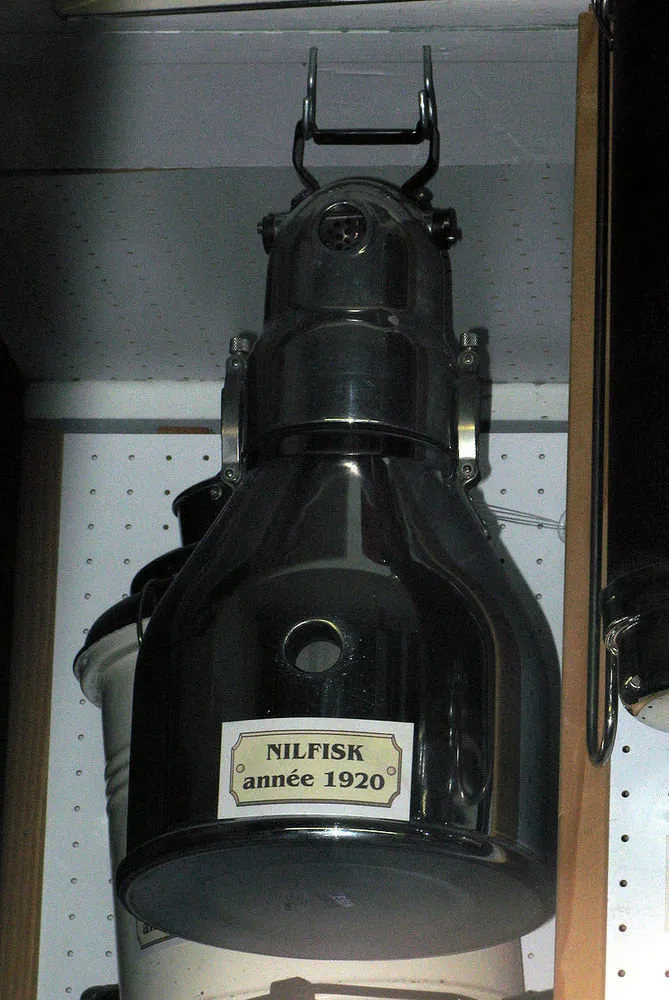
American Standard
At around the same time, a humble cleaner named Murray Spengler worked at William Hoover's leather factory. It was he who came up with the idea of creating an electric version of But's device. It was a device with a dust bag instead of a dust container and a broom handle as the handle—it worked perfectly, absorbing dust.
Entrepreneur Hoover saw the bright prospects of this modest mechanism and bought the patent from Spengler for production.
Hoover's models weighed about 20 kg, which was an incredible achievement in engineering. Thanks to Hoover's innovations, the classic American model of vacuum cleaner appeared—brushes, a bag, and a motor mounted on one handle.

European Version
In 1910, a Swedish man named Axel Wenner-Gren, who was in Vienna on business, became interested in a strange American device displayed in a store window—a 'Santo' vacuum cleaner. This was a vacuum cleaner that couldn't be called domestic.
For two years, Axel worked in the European branch of the 'Santo' company and in the USA, where he studied new methods of selling goods to Europe. He returned to Sweden with an idea that had been born in front of the vacuum cleaner display.
Wenner-Gren assembled a team of engineers who began developing the first domestic vacuum cleaner, which was introduced in 1912.
The device had a fan instead of a heavy air pump, and its weight was instantly reduced to 14 kg.
A real breakthrough came with the appearance of Model V. It was a cylinder that moved on wheels, connected to it by a rubber hose and a telescopic tube with a brush. This is how almost all models of dry cleaning vacuum cleaners released throughout the 20th century would look.

Robotic Vacuum Cleaner
The first robotic vacuum cleaner appeared in 2002. Consumers got the opportunity not only to admire this intelligent gadget but also to purchase it for personal use.
Recent Achievements
Today, the market offers a wide variety of vacuum cleaner models. They are compact and lightweight, easy to clean and wash. They not only clean surfaces but also the air, collecting spilled liquids. Manufacturers develop systems that make life easier for allergy and asthma sufferers.
For example, the multifunctional vacuum cleaner DryBOX Amfibia from company Thomas is equipped with two of the most modern filtration systems—cyclone DryBOX for dry cleaning and water AquaBOX for thorough cleaning with simultaneous air purification. This vacuum cleaner collects 99.99% of dust and 100% of pollen.
Additionally, with AquaBOX Amfibia, you can perform wet cleaning of soft furniture, carpets, and mattresses and delicate cleaning of parquet floors using the unique Aqua Stealth attachment.
More articles:
 If Your Home Feels Tight: Ideas for Designing Narrow Spaces
If Your Home Feels Tight: Ideas for Designing Narrow Spaces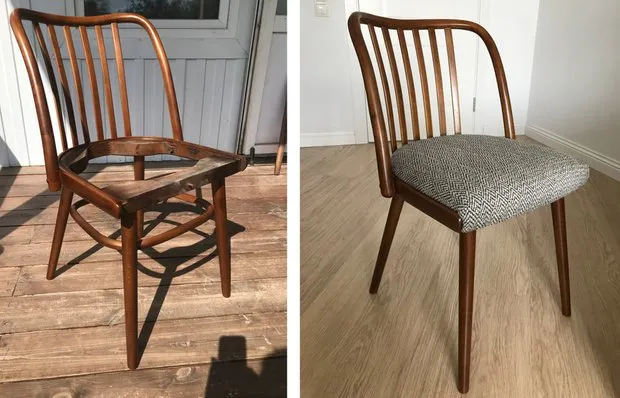 Refurbishing Old Furniture: Step-by-Step Guide + Photos
Refurbishing Old Furniture: Step-by-Step Guide + Photos What Did Zaha Hadid Create for the Bathroom? And 6 More Famous Designers
What Did Zaha Hadid Create for the Bathroom? And 6 More Famous Designers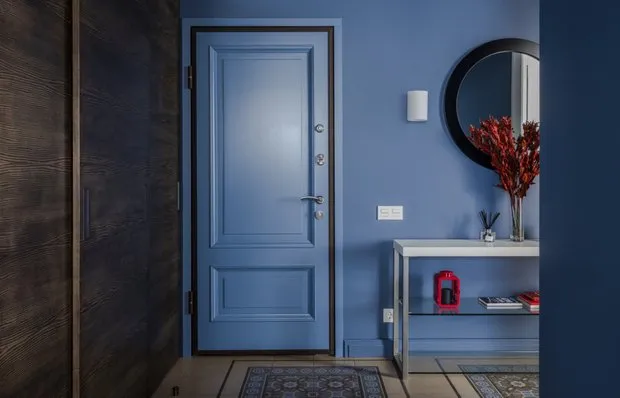 How to Fit Everything in a Small Hallway: 5 Ideas
How to Fit Everything in a Small Hallway: 5 Ideas How to Choose the Perfect Kitchen Sink: 8 Tips
How to Choose the Perfect Kitchen Sink: 8 Tips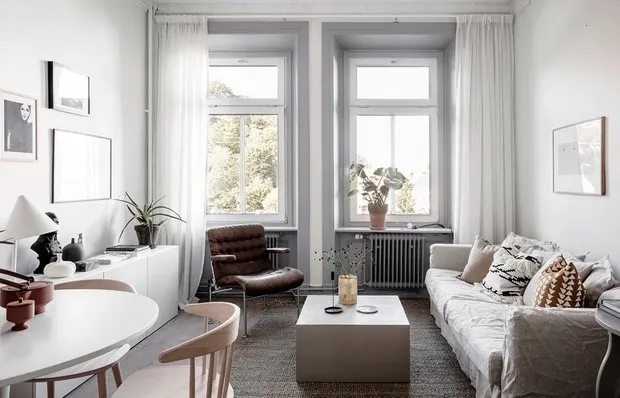 2-Room Apartment in Sweden with Brick Wall in Loft Style
2-Room Apartment in Sweden with Brick Wall in Loft Style How to Make a Shelf from Boards and Pipes
How to Make a Shelf from Boards and Pipes Personal Experience: How They Built a Farm and Now Supply Restaurants with Harvest
Personal Experience: How They Built a Farm and Now Supply Restaurants with Harvest